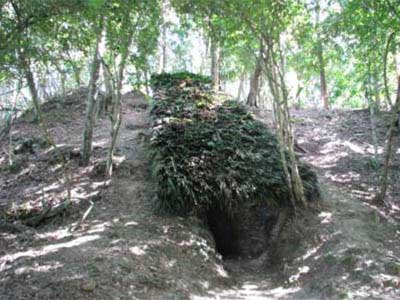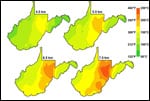An energy source that covers the whole gamut – from producing electricity for industries, to even cooling homes
Maria Richards, coordinator of the SMU Geothermal Laboratory in the Roy M. Huffington Department of Earth Sciences, has been named president-elect of the Geothermal Resources Council. She will become the 26th president of the global energy organization beginning in 2017.
Richards has been at the forefront of SMU’s renowned geothermal energy research for more than a decade, and the University’s mapping of North American geothermal resources is considered the baseline for U.S. geothermal energy exploration. SMU’s Conference on Geothermal Energy in Oil and Gas fields, which Richards directs, is pioneering the transition of oil and gas fields to electricity-producing systems by harnessing waste heat and fluids.
“The Geothermal Resources Council is a tremendous forum for expanding ideas about geothermal exploration and technology related to this commonly overlooked source of energy provided by the Earth,” Richards said. “It’s a great opportunity for educating people about an energy source that covers the whole gamut – from producing electricity for industries, to reducing our electricity consumption with direct-use applications, to even cooling our homes.”
“This also is a unique occasion for me to encourage and mentor young women to participate in the sciences throughout their careers and get involved in leadership roles,” said Richards, who will be the GRC’s first woman president.
Development of many forms of renewable energy can lose momentum when the price-per-barrel of oil is low, but Richards expects the current low oil prices to drive more interest in geothermal development.
Today, sedimentary basins that have been “fracked” for oil and gas production create reservoir pathways that can later be used for heat extraction. Fluids boil after being pushed through the hot reservoir pathways, producing electricity-generating steam. In addition to the geothermal energy, the equipment used in active oil and gas fields generates heat, which also can be tapped to produce electricity.
“Oil and gas drilling rig counts are down,” Richards said. “The industry has tightened its work force and honed its expertise. The opportunity to produce a new revenue stream during an economically challenging period, through the addition of relatively simple technology at the wellhead, may be the best chance we’ve had in years to gain operators’ attention.”
SMU’s seventh international geothermal energy conference and workshop is scheduled for May 18 to 20 on the Dallas campus. Designed to reach a broad audience, from the service industry to reservoir engineers, “Power Plays: Geothermal Energy in Oil and Gas Fields,” is an opportunity for oil and gas industry professionals to connect with the geothermal and waste-heat industries to build momentum. The conference is a platform for networking with attendees from all aspects of project development. Presentations will highlight reservoir topics from flare gas usage to induced seismicity and will address new exploration opportunities, including offshore sites in the eastern United States. Information and registration is available at www.smu.edu/geothermal.
Richards’ projects at SMU’s Geothermal Laboratory vary from computer-generated temperature-depth maps for Google.org to on-site geothermal exploration of the volcanic islands in the Northern Mariana Islands. Along with Cathy Chickering Pace, Richards coordinates the SMU Node of the National Geothermal Data System funded by the U.S. Department of Energy.
Past research includes the Enhanced Geothermal System potential of the Cascades, Eastern Texas Geothermal Assessment, Geothermal Map of North America, Dixie Valley Synthesis, and the resource assessment for the MIT Report on the Future of Geothermal Energy.
Richards has previously served on the Geothermal Resources Council Board of Directors and was chair of the Outreach Committee in 2011‐12. She is also a Named Director of the 2015 Board for the Texas Renewable Energy Industries Alliance (TREIA).
Richards holds a Master of Science degree in Physical Geography from the University of Tennessee, Knoxville and a B.S. in Environmental Geography from Michigan State University. — Kimberly Cobb
Follow SMUResearch.com on twitter at @smuresearch.
SMU is a nationally ranked private university in Dallas founded 100 years ago. Today, SMU enrolls nearly 11,000 students who benefit from the academic opportunities and international reach of seven degree-granting schools. For more information see www.smu.edu.
SMU has an uplink facility located on campus for live TV, radio, or online interviews. To speak with an SMU expert or book an SMU guest in the studio, call SMU News & Communications at 214-768-7650.


 17 million-year-old whale fossil provides 1st exact date for East Africa’s puzzling uplift
17 million-year-old whale fossil provides 1st exact date for East Africa’s puzzling uplift SMU analysis of recent North Texas earthquake sequence reveals geologic fault, epicenters in Irving and West Dallas
SMU analysis of recent North Texas earthquake sequence reveals geologic fault, epicenters in Irving and West Dallas Bitcoin scams steal at least $11 million in virtual deposits from unsuspecting customers
Bitcoin scams steal at least $11 million in virtual deposits from unsuspecting customers Teen girls report less sexual victimization after virtual reality assertiveness training
Teen girls report less sexual victimization after virtual reality assertiveness training Women who are told men desire women with larger bodies are happier with their weight
Women who are told men desire women with larger bodies are happier with their weight










